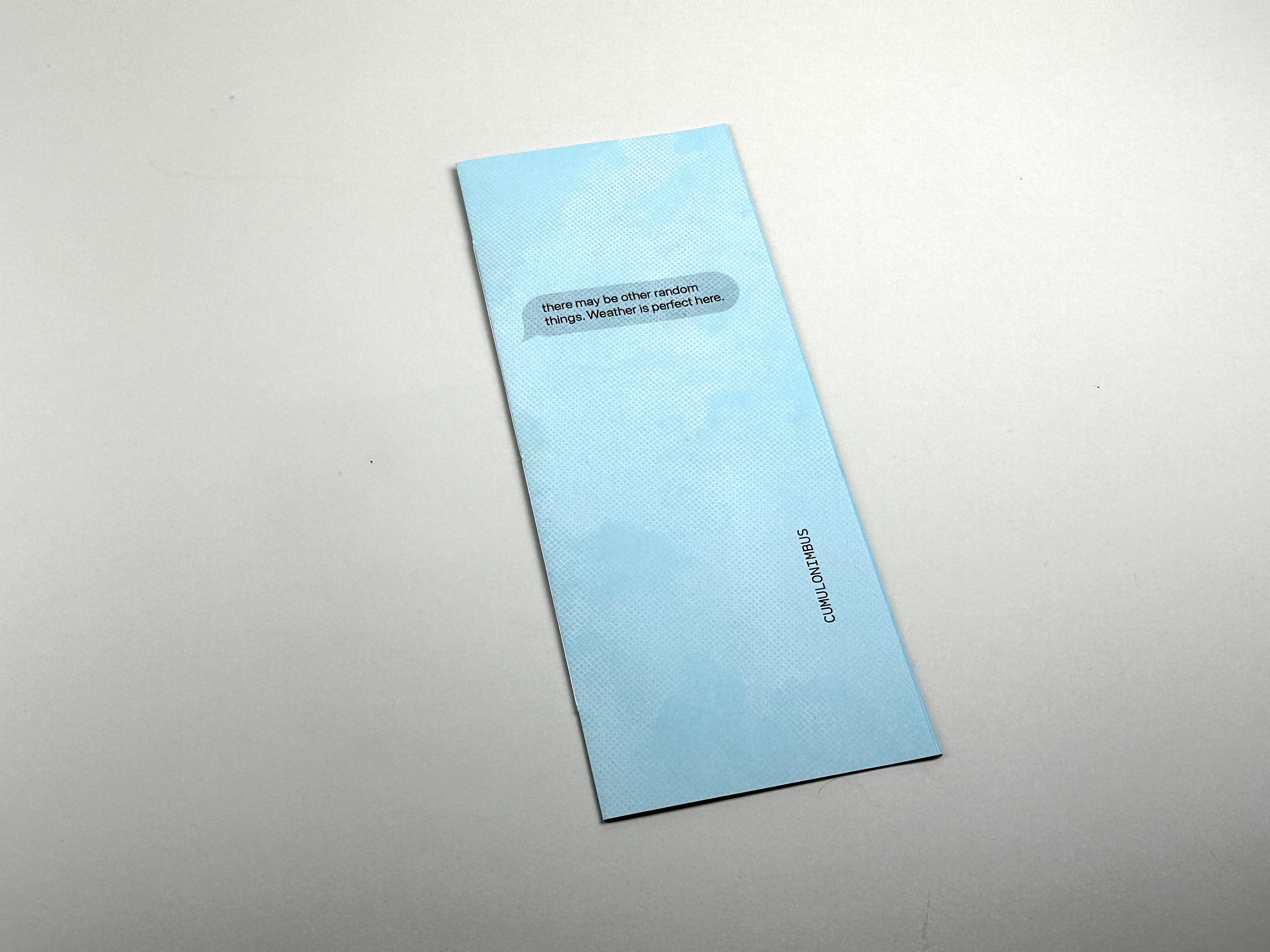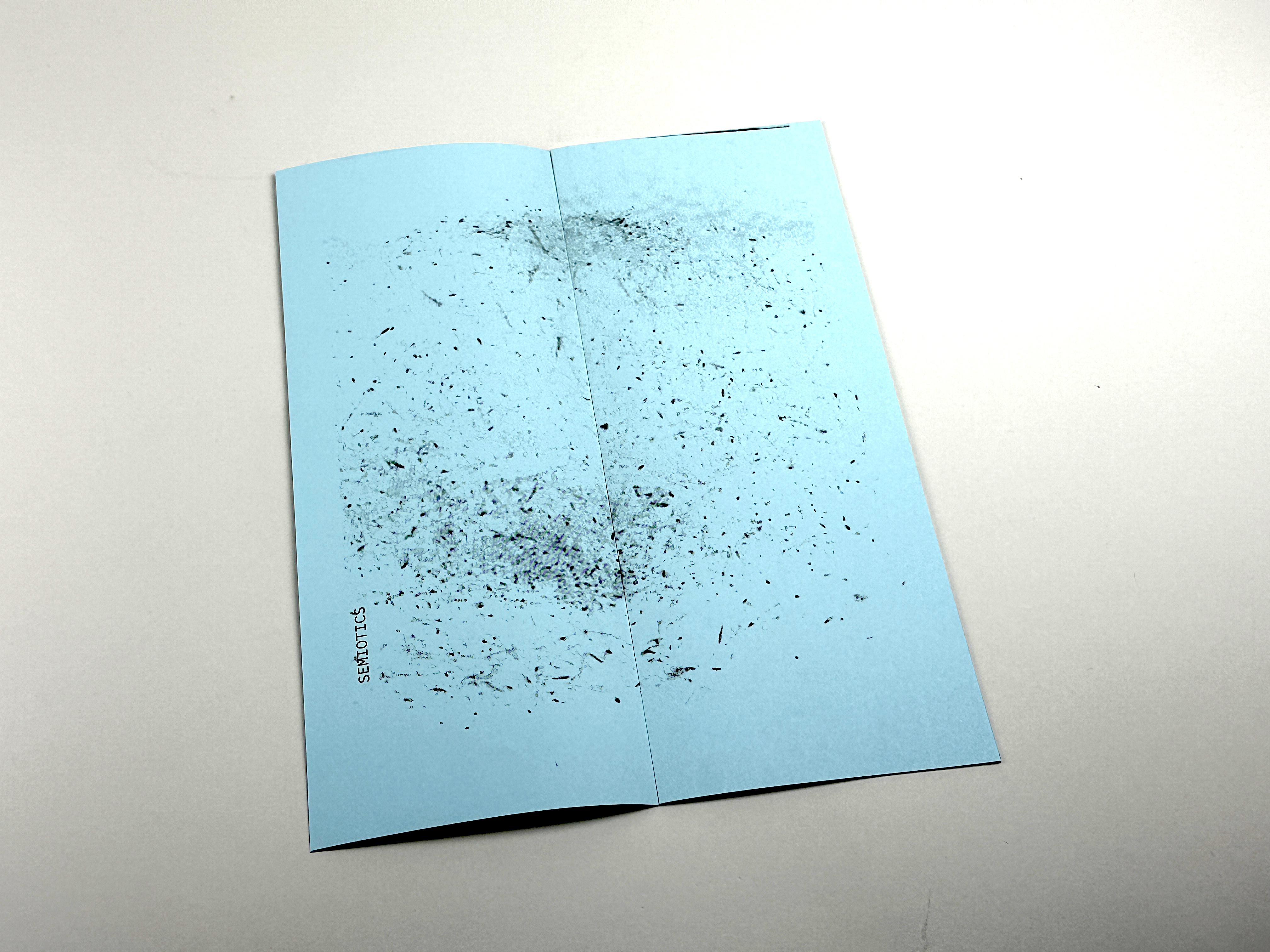Prepostness
Book written and designed for the Prepostness Reader coordinated and published by Pointed Press (Tricia Treacy) and Riso Riso Austin (Jimmy Luu).





Things Falling from the Sky
Since the end of last year, various DesignInquirers have been making and revisiting work related to the prompt “things falling from the sky”
If there were ever a folk tale to presage the global climate crisis it would have to be Chicken Little. In typical oral tradition the story traversed cultures from Kylling Kluk in Scandinavia to Henny Penny in Scotland — and common among all its retellings was something falling from the sky.
“One day Henny-penny was picking up corn in the rickyard when—whack!—an acorn hit her upon the head. "Goodness gracious me!" said Henny-penny, "the sky's a-going to fall; I must go and tell the King."” After meeting fellow fowl and a fox on her way to warn the King, Henny-Penny is distracted by a rooster’s crow and, presuming it is dawn, realizes it’s time for her to lay her egg. She returns to her nest and never warns the King.
In Paul Thomas Anderson's film the "thing falling from the sky" is frogs. A rain of frogs is depicted in the Old Testament Book of Exodus as one of the plagues inflicted upon Egypt to compel the Pharaoh to release the Israelites. The occurrence, while rare, is not fictitious. Frog rain occurred in Hungary in June 2010, Cabo Polonio, Uruguay in 2011 and Ishikawa Prefecture, Japan in 2009, though the events never earned an idiom like "raining cats and dogs." But snakes have been recorded falling from the sky, and so have fish.
If there were ever a folk tale to presage the global climate crisis it would have to be Chicken Little. In typical oral tradition the story traversed cultures from Kylling Kluk in Scandinavia to Henny Penny in Scotland — and common among all its retellings was something falling from the sky.
“One day Henny-penny was picking up corn in the rickyard when—whack!—an acorn hit her upon the head. "Goodness gracious me!" said Henny-penny, "the sky's a-going to fall; I must go and tell the King."” After meeting fellow fowl and a fox on her way to warn the King, Henny-Penny is distracted by a rooster’s crow and, presuming it is dawn, realizes it’s time for her to lay her egg. She returns to her nest and never warns the King.
In Paul Thomas Anderson's film the "thing falling from the sky" is frogs. A rain of frogs is depicted in the Old Testament Book of Exodus as one of the plagues inflicted upon Egypt to compel the Pharaoh to release the Israelites. The occurrence, while rare, is not fictitious. Frog rain occurred in Hungary in June 2010, Cabo Polonio, Uruguay in 2011 and Ishikawa Prefecture, Japan in 2009, though the events never earned an idiom like "raining cats and dogs." But snakes have been recorded falling from the sky, and so have fish.
Things falling from the sky — the weather — is inescapable. It imposes itself on every aspect of our lives. We pay attention to it. We receive notifications about it. We respond to it. We dress for it.
Things falling from the sky becomes evidence of our impact on climate. Predicting when things will fall from the sky is information we typically seek out. Will I need an umbrella when I go out today? The information that guides this behavior often takes the form of weather alerts on our devices. “DRENCHING RAIN Heavy rainfall to persist through the day. Use Minutecast to track the rain and stay dry”. The weather forecast is our daily ritual of prepostness.
We are in the middle of a climate emergency that is quite difficult to comprehend, difficult for some people even to believe. Because unlike other emergencies related to fires or hospitals, we don’t see it, or feel much urgency.
The most familiar way in which people try to convey the scale of the impact of global heating, sea level rise, plastics pollution, species extinction, etc etc, is through data. But the bombardment of people with information about the scale of the disaster has the effect of paralysing us, or making us feel like it’s too big to do anything about, or — worse still — prompting us to think that recycling our rubbish is “doing our bit” for the planet”.
Timothy Morton argues that “dumping data on ourselves— is actually inhibiting a more genuine way of handling ecological knowledge”
Things falling from the sky becomes evidence of our impact on climate. Predicting when things will fall from the sky is information we typically seek out. Will I need an umbrella when I go out today? The information that guides this behavior often takes the form of weather alerts on our devices. “DRENCHING RAIN Heavy rainfall to persist through the day. Use Minutecast to track the rain and stay dry”. The weather forecast is our daily ritual of prepostness.
We are in the middle of a climate emergency that is quite difficult to comprehend, difficult for some people even to believe. Because unlike other emergencies related to fires or hospitals, we don’t see it, or feel much urgency.
The most familiar way in which people try to convey the scale of the impact of global heating, sea level rise, plastics pollution, species extinction, etc etc, is through data. But the bombardment of people with information about the scale of the disaster has the effect of paralysing us, or making us feel like it’s too big to do anything about, or — worse still — prompting us to think that recycling our rubbish is “doing our bit” for the planet”.
Timothy Morton argues that “dumping data on ourselves— is actually inhibiting a more genuine way of handling ecological knowledge”

Excerpt from performance at DesignInquiry Prepostness
Information is most digestible in small chunks. Perhaps the phone alert has discovered the perfect method for delivering behaviorally modifying actions. Alert: Rain today. Action: Don the wellies. Tsunami sirens are another immediate and simple, but critically life-saving alert. In the event that a tsunami may be triggered sirens blare to alert residents to seek safety. These sirens, like many public alert systems, must be tested regularly to ensure they work when real danger occurs. Sound as method for shifting behavior can be a powerful tool. Similar forms of short bursts of information might be the store receipt. Thermally printed thin sheets of paper that can embed small chunks of information thereby creating a time based narrative are similar to device alerts. Ceal Floyer created “Monochrome Till Receipt (White)” in 1998. It is a simple thermal receipt from Sainsbury’s in which the artist only purchased white things: “Pasteurized Milk. Maldon Seasalt. Thai Cocnt Milk. Icing Sugar.” Etc. Both these forms – alert and till receipt – represent vehicles for information delivery and each in its own time-based modality.
Folk tales began as an oral tradition and it’s in that spirit that deploying narratives across these mediums could be explored. If one can’t actually change collective behavior, maybe the next best, or only option, is to evidence our attempt to do so? And in the doing tell a modern folktale about it.
![]()

